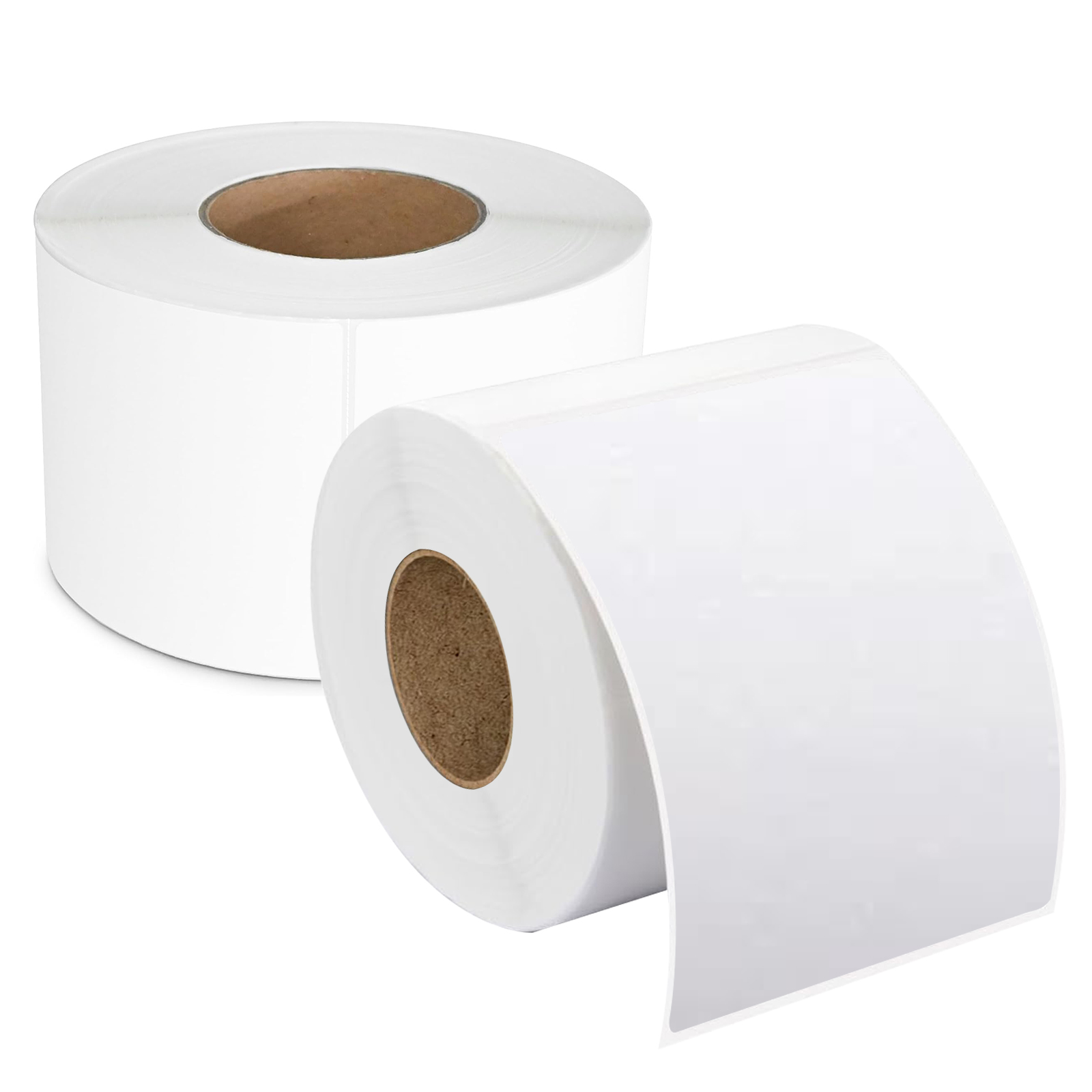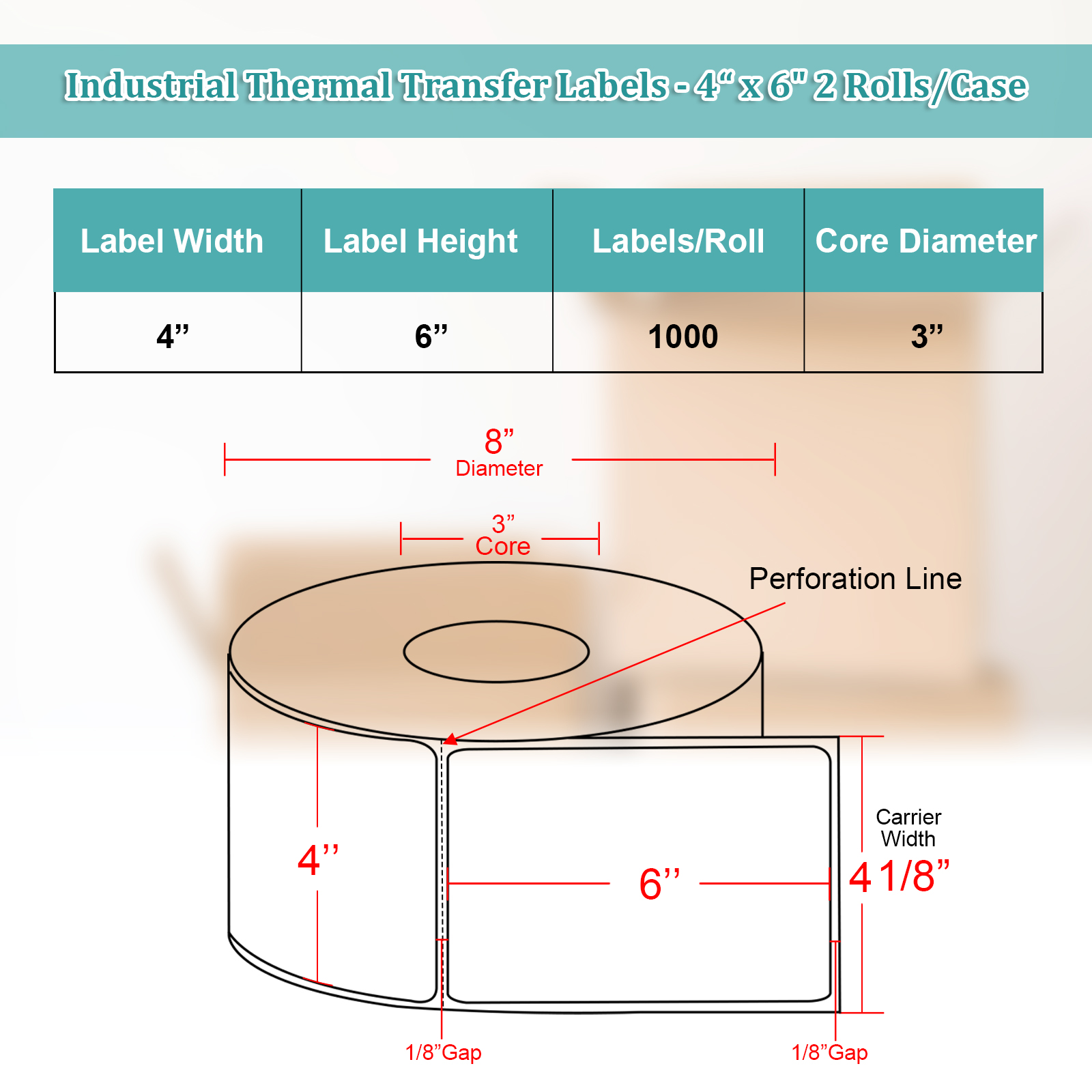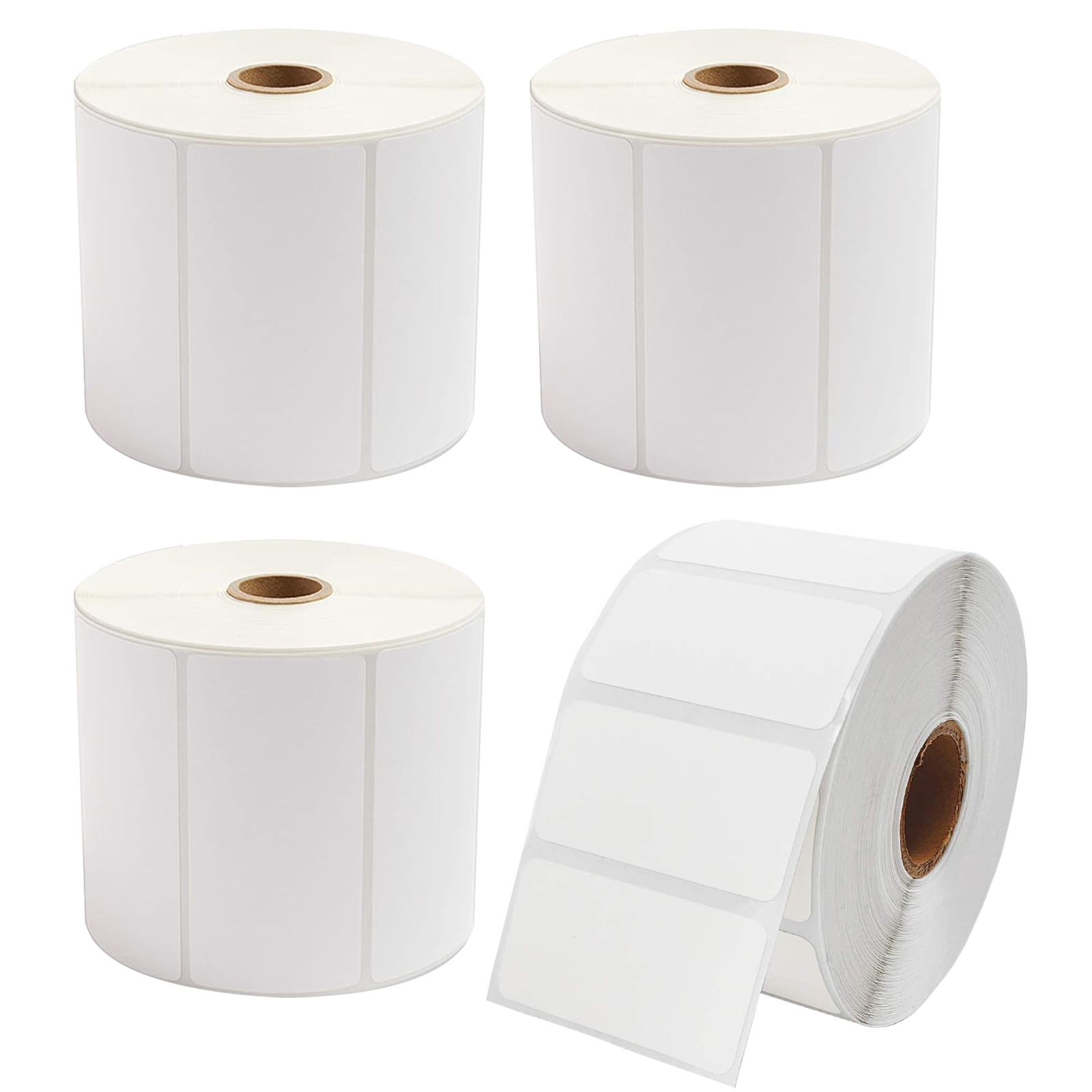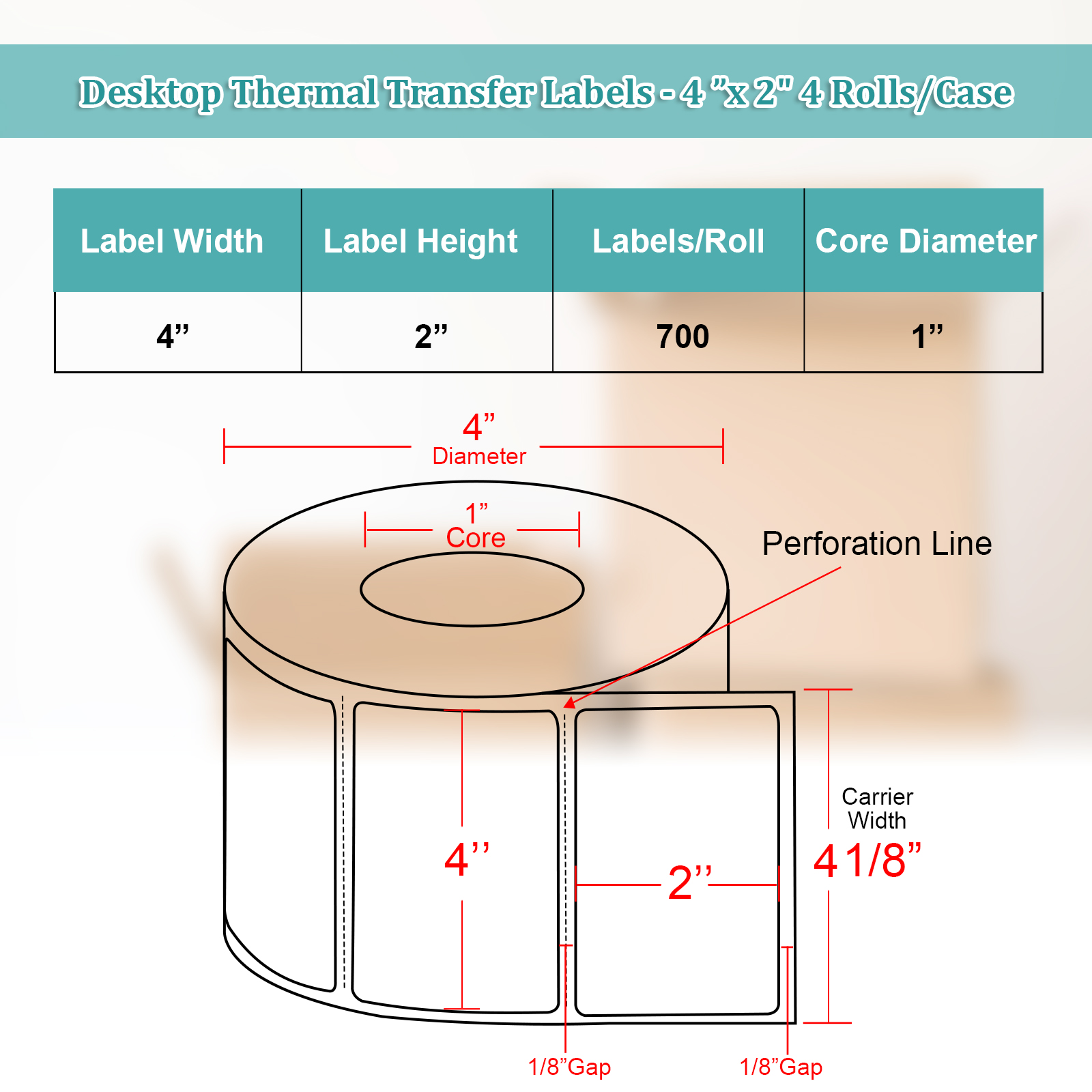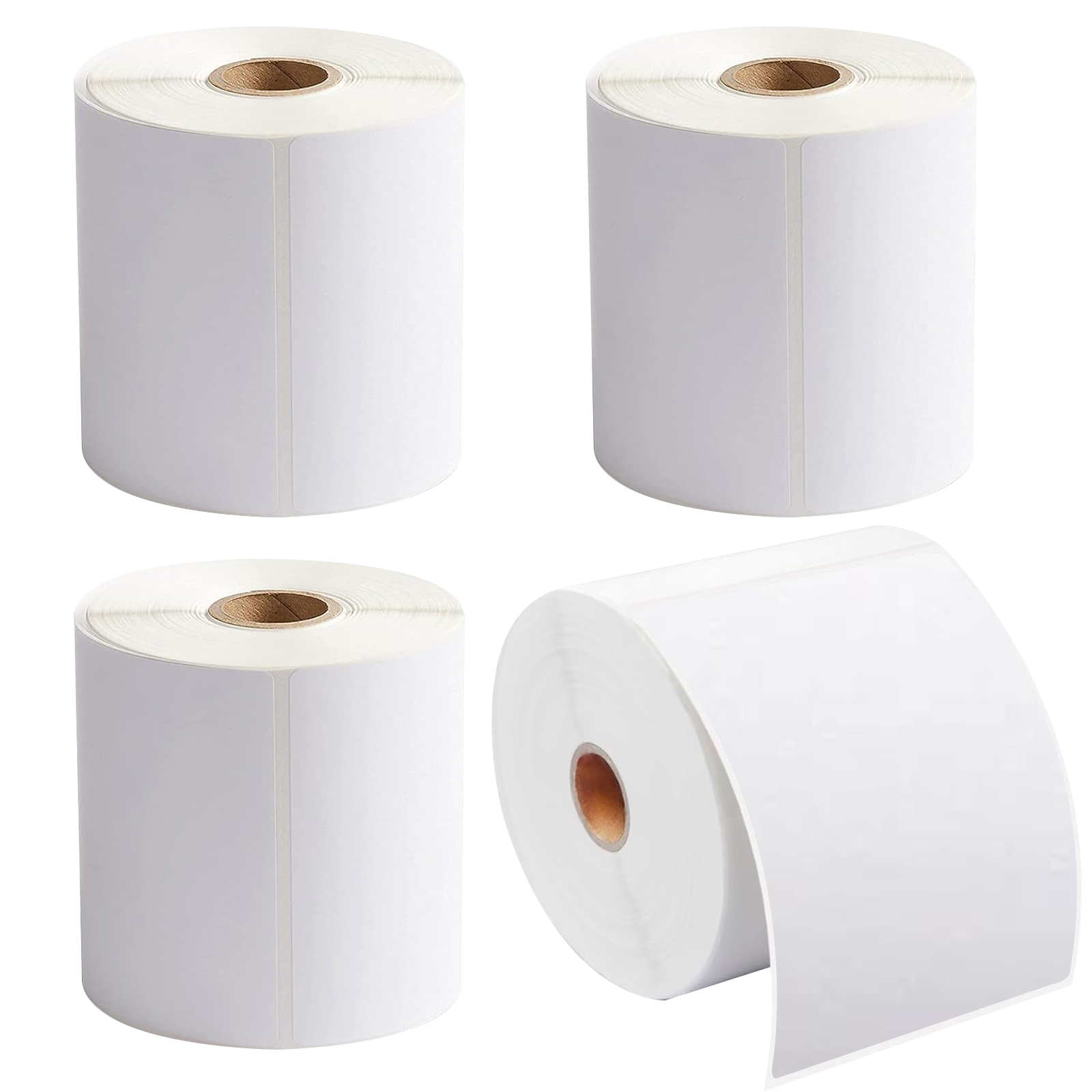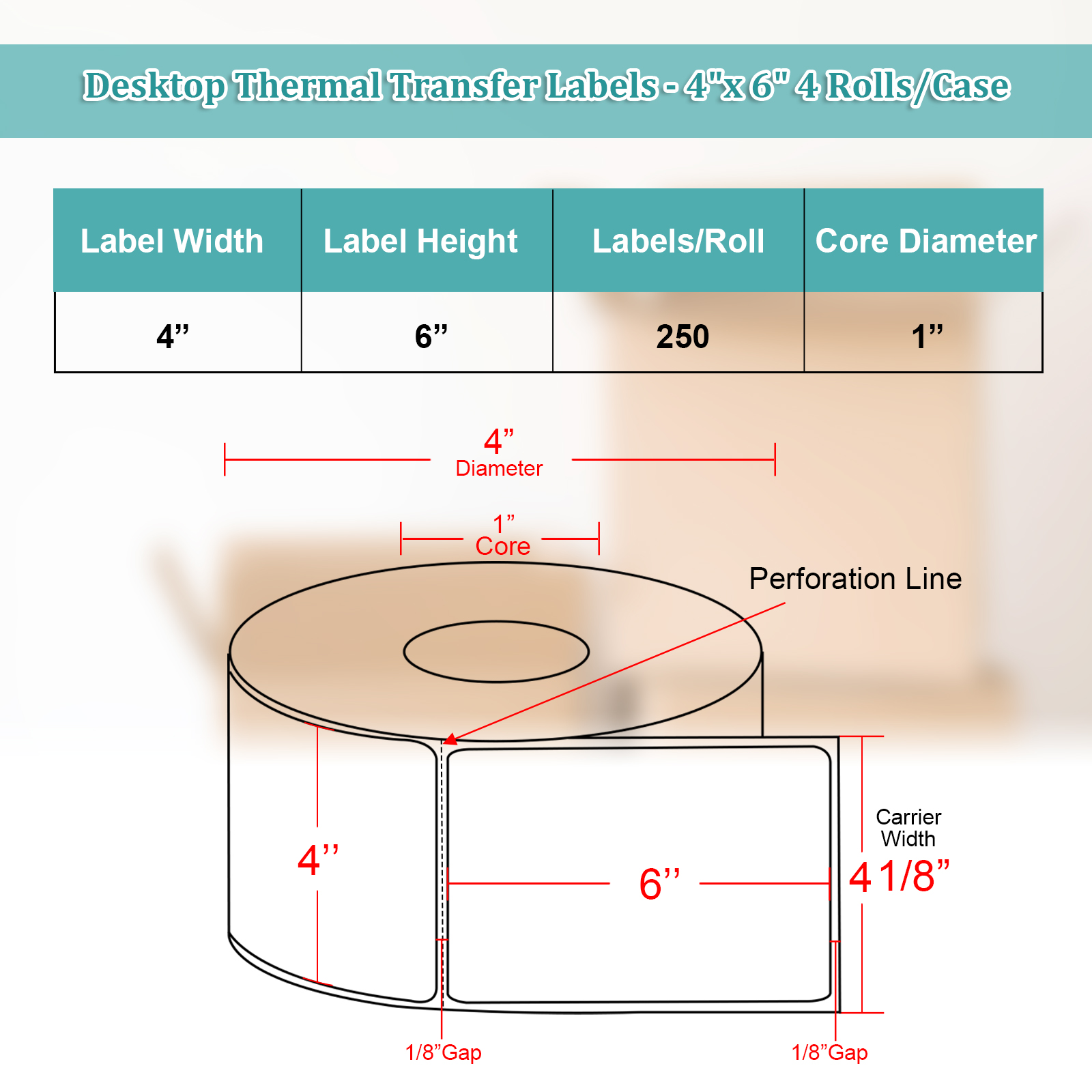Thermal Transfer Labels
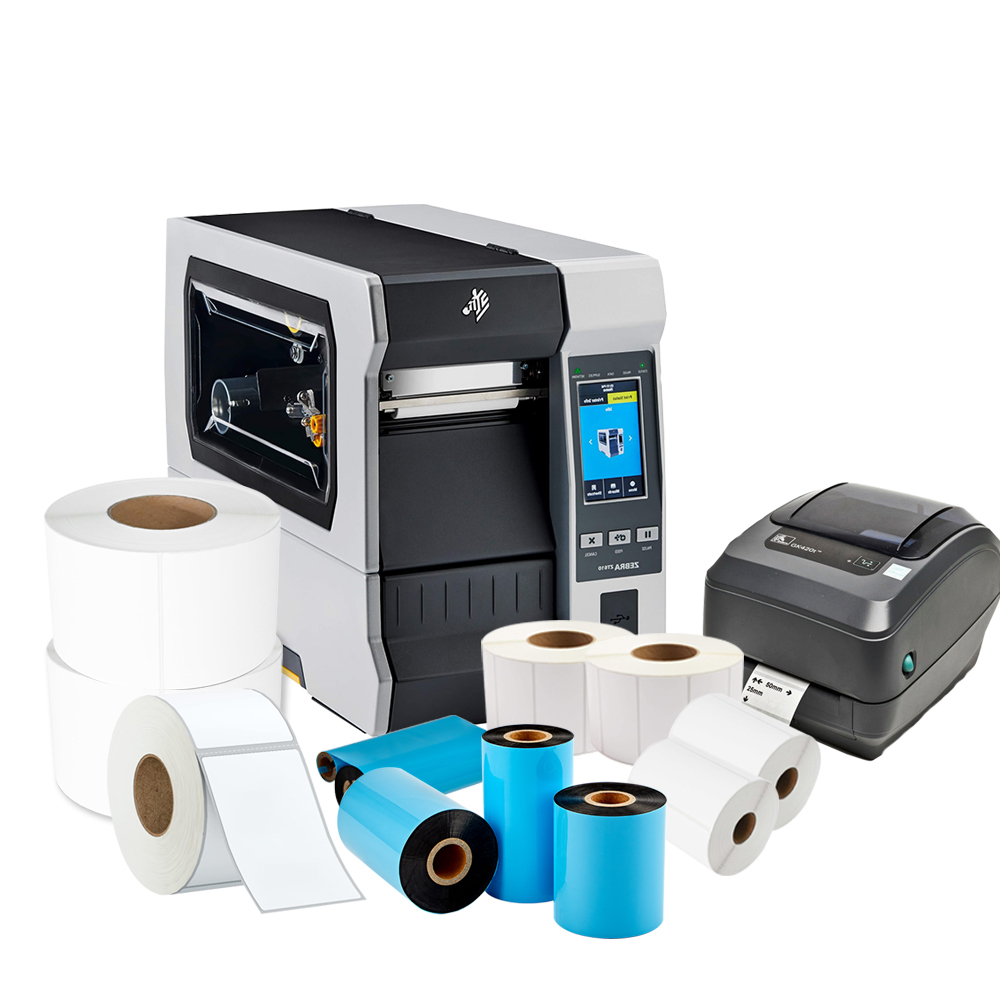
Thermal Transfer Labels
Key Characteristics of Techbarco Thermal Transfer Labels:
1. Print Quality:
Thermal transfer printing produces high-quality, crisp, and durable images, text, and barcodes.
The print quality is superior to direct thermal printing, which can fade over time.
2. Durability:
Thermal transfer labels are resistant to scratches, smears, chemicals, moisture, and other environmental factors.
The durability depends on the type of ribbon used (wax, wax/resin, or resin).
3. Customization:
Thermal transfer labels can be customized with variable data, graphics, barcodes, and other information.
This makes them suitable for a variety of applications, such as product identification, shipping labels, asset tracking, and more.
4. Printing Technology:
Thermal transfer printing uses a heated print head to transfer ink or coating from the ribbon onto the label material.
This process provides precise control over print quality and detail compared to other labeling methods.
Choose from a variety of label paper sizes and configurations to optimize your labeling processes:
- Label Paper Sizes: 4x2 inches, 4x6 inches, and other custom sizes available upon request.
- Core Sizes: 1-inch and 3-inch core options for compatibility with a wide range of printer models.
- Roll Quantities: Select from packs of 2 or 4 rolls of label paper, with label quantities ranging from 250 to 2750 labels per roll to suit your volume needs.
Best Practices for Choosing Thermal Transfer Labels
Thermal transfer labels have enjoyed widespread adoption in product labeling and packaging, as well as inventory, due to their resistance and versatility. However, the selection of proper thermal transfer labels could be critical to ensure optimum performance and effectiveness. Here are the key factors:
1. Choosing the Right Label Material
Among these, material becomes one of the most critical factors in thermal transfer labels, offering a number of benefits depending on the application:
- Paper Labels: Indoor use, very suitable for general labeling. Cost-effective but possibly not standing rough conditions.
- Synthetic Labels: These labels are made up of polyester and polypropylene, which may be more robust and resistant to moisture, chemicals, and wear and tear. These are suited for outdoor applications or environments that are exposed to wear and tear.
- Specialty Materials: Depending on the application-specific materials, like medical use labels or food packaging, it will demand materials to comply with the safety and compliance demands of an industry.
2. Selecting Label Size and Shape
For functionality and aesthetics, the size and shape of the labels are crucial:
- Size: The label must be appropriately sized for the product or packaging. A label that is too small may not hold enough information, while one that is too big can look unprofessional and occupy too much space.
- Shape: Labels come in various shapes such as rectangular, square, round, and others. Choose a shape that fits the design of the product and makes application easy.
Print Area: Consider the amount of information the label needs to display. Allow enough space to accommodate barcodes and logos, along with text, without clutter.
3. Printer Compatibility
Not all thermal transfer labels are compatible with every printer. It’s vital to ensure that your labels work seamlessly with your thermal transfer printer:
- Printer Specifications: Check the printer’s specifications regarding label size, material compatibility, and ribbon requirements. This information can usually be found in the printer's manual or manufacturer’s website.
- Ribbon Type: Different thermal transfer printers may require specific types of ribbons (wax, resin, or a combination). Ensure that the label material is compatible with the type of ribbon you plan to use for optimal print quality and durability.
- Testing: Before placing a large order, test a few labels to ensure they meet quality standards and adhere properly to your products.
Conclusion
Choosing the right thermal transfer labels requires careful consideration of the material, size, and shape. Additionally, ensure that your printer supports the selected labels. This ensures a durable, functional label that enhances brand value and withstands the conditions it is exposed to. Making informed decisions ensures your labels perform effectively and align with your business needs.

